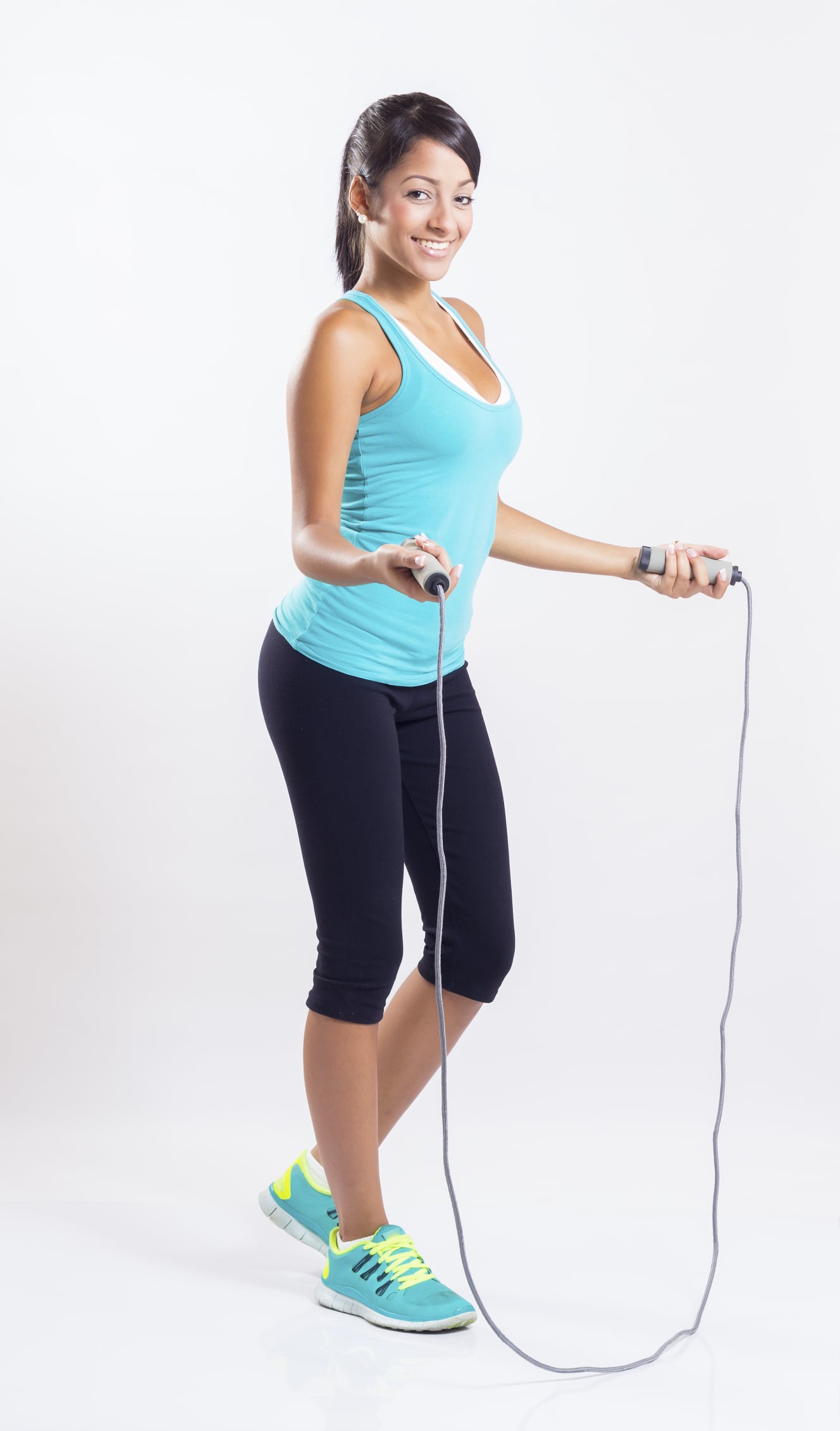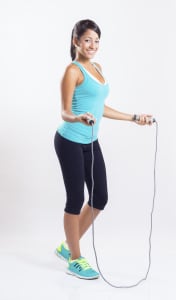If your resolution to get fit this year is already slipping away, or if you didn’t bother to make a fitness resolution this year, then try this ultra-fast interval workout. We call it our Anytime, Anywhere Workout. And we think it’s what you need to make 2014 a leaner, healthier year.
Here are three moves to do with minimal equipment whether you’re at home, in the gym, in the park or on the road, in a hotel room or guest bedroom. Just grab a mat, a towel and a watch.
Why intervals?
You’re pressed for time. A more intense workout, even with tiny breaks, is a shorter workout. There’s nothing wrong with a stroll around the neighborhood, but if you’re looking to change your body, you may need to add intense intervals to the mix. Research suggests that you get more body benefits from going hard, resting briefly, then going hard again, than from going hard for a full 10 minutes. Besides, a 20-to 60-minute, steady-state workout can be mind numbingly dull when done several times a week. Adding intervals keeps it fast and fun!
The Technique
Be focused and task-oriented. Shoot for unbroken sets done with good form. Your rests should be active. If you’re running up stairs, your rest should be a walk, not a sit-down break. And your breaks should be 30 to 90 seconds long. Aim for good form, continuity and — eventually — speed.
How intense?
Don’t worry about your percentage heart rate and such. Take it slow at first, but you should feel a little winded and not interested in talking much after a few minutes into this workout. It should feel a bit uncomfortable. Ease up if you start feeling pain. Listen to your body, but test your limits little by little. By the last few intervals, you should push your body pretty hard. And then, you’re done!
How much? How often?
For your first few times, do these as single 10-minute workouts, 1-to-3 times a week. After a few weeks, string two or three of them together for a 20- or 30-minute bout that’s sure to get you closer to your fitness resolution.
Gear up for success
Intense workouts can feel even worse if your shoes are blown or your fitness bra is saggy. Keep uncomfortable bounce and impact to a minimum. You also want to be hydrated; drink a few glasses of water before and after your workout.
Starting line
Start with a 2-minute, low-intensity warm-up, like walking or a little freestyle dancing. Afterward, reward yourself with a cool-down and some stretching.
10-20-30
What you’ll work: Upper arms, core, thighs and butt.
What you’ll need: A mat and a stopwatch. (There are also apps for that.)
How to do it: After a warm up, do 10 push-ups, 20 sit-ups and 30 squats as quickly as you can while using good form. Repeat as many times as you can in a 10-minute period with no rests between sets.
Style points:
- Perform push-ups from your toes or knees, keeping your core strong and your back straight. Start with your chest on the floor, push up, and come all the way down. If your chest doesn’t touch the floor, the rep doesn’t count.
- Squat by keeping your head and chest up as you send your hips back and down. Don’t be afraid to go low. Return to starting position by pushing through your heels as you straighten your legs.
- Sit-ups use a greater range of motion than crunches. Start with your knees bent and feet flat on the floor, and don’t hook them under a sofa or ask someone to hold your ankles. Start on your back with your arms bent at about 90 degrees above your head. Use your arms’ momentum to begin the sit up. At the end of the movement, your chest will brush your thighs. Roll back into starting position with your back on the floor and arms overhead.
RIP (Rest in Plank)
What you’ll work: cardio and core.
What you’ll need: a stopwatch, a mat or towel and a jump rope with enough clearance space to use it.
How to do it: Do 100 jumps as quickly as you can with good form. Then “rest” in the plank position, holding a plank as long as you can. Repeat as many times as you can in 10 minutes.
Jump cues:
- Keep your elbows bent very close to your body and turn the rope with your wrists, not your arms.
- Jump high enough to clear the rope comfortably — a few inches off the floor.
After 100 jumps, prepare to do planks by getting on your stomach on the mat. Hover above the mat on your elbows and toes, with your back straight. Plank for one minute or longer if you can, then hit the ropes. Repeat 3 to 5 times.
Plank cues:
- Facing the floor, prop yourself up on your elbows and your toes with your legs extended behind you. Plant your elbows directly under your shoulders.
- Focus on keeping your back straight and your core strong.
- For more of a challenge, draw your feet closer to each other. Or lift one foot and balance on the other.
- For less of a challenge, place your feet a little wider than hip-width apart, or prop up on your knees in a modified plank position.
Tabata to Go
What you’ll work: cardiovascular system.
What is it? Tabata is a 4-minute interval workout: 20 seconds of intense effort followed by 10 seconds of rest. It’s a framework that can be applied to many workouts. Start off with a trot/power walk interval.
What you need: Use a stopwatch with a second hand to keep it simple. But we love the free timer at www.tabatatimer.com, and the free Tabata apps for iPhone, Android or Windows phones. For about a dollar, download a song from iTunes. The tempo changes seamlessly signal when it’s time to ramp it up or rest. It’s worth the money.
How to do it: After your warm up, power walk for 10 seconds, then trot, jog or run for 20 seconds. Repeat 4 times. Walk for a minute, then repeat the 4-minute cycle.
Maximize your options:
Take your workout to the treadmill, an indoor bike or a rowing machine. If the gym isn’t calling you, alternate running up and walking down stairs or use a hiking trail.
Nichele Hoskins, who specializes in health journalism, is a certified fitness expert and Spinning instructor.









